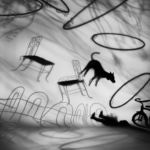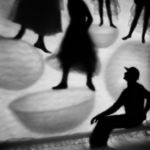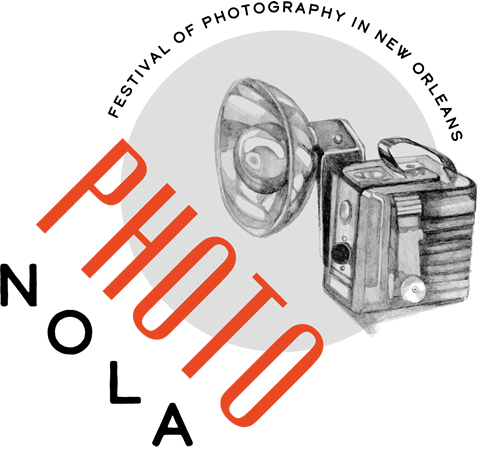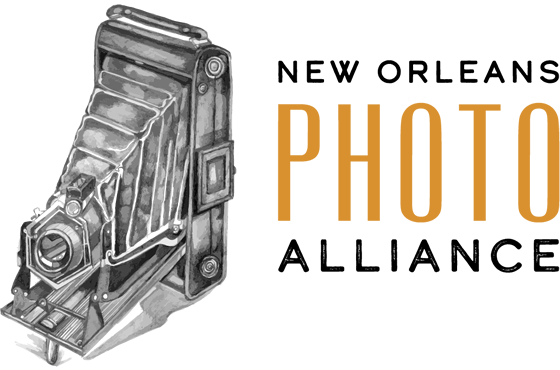For two days photographers had face-to-face meetings with influential editors, curators and gallerists assembled from throughout the U.S. and abroad. After the portfolio reviews concluded, each reviewer was asked to select three outstanding projects. Eliot Dudik, Barbara Ciurej & Lindsay Lochman, and Susan kae Grant were chosen from among the seventy participants in the 2014 PhotoNOLA Portfolio Review.
Eliot Dudik received the most votes, earning the PhotoNOLA Review Prize, which includes a solo exhibition at the New Orleans Photo Alliance Gallery during the tenth annual PhotoNOLA, a book prize from Edition One valued at $2000, a cash award of $1000, and a marketing consultation with Mary Virginia Swanson. 2nd Place winners, Barbara Ciurej & Lindsay Lochman, and 3rd Place winner, Susan kae Grant, will have portfolios and interviews published in Dodho Magazine. In addition, the winners will be highlighted in a LensCulture feature article & social media.
Eliot Dudik
Eliot Dudik is a photographic artist, educator, and bookmaker based in Virginia. He was recognized for his Broken Land and Still Lives portfolios, in which he documents Civil War battlegrounds and historic reenactments, exploring the connection between culture, landscape, memory, and politics.
“Eliot Dudik is a force of nature. He is also a photographer’s photographer, doing the hard work of showing up with a large format camera and a vision for telling stories. He brings a level of excellence to whatever he produces–from his stellar work, to his handmade over sized portfolio box and his one of a kind mini portfolio leave behinds. Eliot is also that rare voice that draws our attention to his work, while he stays humble and engaged with the world around him. His work finds beauty and pathos in the history of our country, a history that is infused with sorrow and sadness.” – Aline Smithson, LenScratch
Barbara Ciurej & Lindsay Lochman
Barbara Ciurej and Lindsay Lochman are a collaborative team, based in Chicago and Milwaukee respectively. They create photographic projects that explore the confluence of history, myth and popular culture. They were recognized for their Processed Views and Natural History series.
“The first I saw of Barbara Ciurej and Lindsay Lochman’s work was their series Natural History. This work has incredible depth and dimension, dreamy in an almost narcotic way yet grounded in the specific realm of herbs and plants. The intersection of cyanotype and portrait works extremely well to draw in the gaze. Later on, I saw Processed Views and was equally enthralled with the thoughtful remaking of Watkins landscapes with junk food. Then, I was startled to see the work was made by the very same artists. It’s impressive to pull off one of these bodies of work; to have created both is extraordinary.” – Alyssa Coppelman


Susan kae Grant
Susan kae Grant is a fine art photographer and educator based in Dallas, Texas. Her award-winning project, Night Journey, examines the perceptual and psychological aspects of dreams, memory and the unconscious.
“If you travel along with Susan Kae Grant on her “Night Journey” you may well emerge with far more questions than answers. Once you enter her maze of large, chiffon vertical panels — on which her mysterious images are printed and then permitted to loom over and waft around you — you become part of her environment of wonder. Her images match the grand theatre of her vision and, like the stage scrim which they sometimes remind me of, once struck by light they can both reveal and obscure, delight and mystify, and present you with a familiar song that you have never heard before.” – Roy Flukinger, Harry Ransom Center
More about Eliot Dudik
Broken Land
2012-Present
The idea of history repeating itself generally associates with the notion that an attempt to recognize mistakes of the past leads to prevention of recurrence. Current political and cultural polarization in the United States seems to have blinded citizens to the effects of historical schisms: divisions that, having not been recognized and resolved, led to the horrific and devastating events of the American Civil War. The current political divide in this country is not dissimilar to that of mid-nineteenth century America, and to severely compound these issues, political leaders today, as before, are apparently incapable of lasting and formative resolutions.
Perspectives on the Civil War and contemporary culture are vast and deeply engrained in our heritage. Prying open and examining viewpoints objectively is exceedingly difficult, but an essential responsibility for all citizens to allow any possibility of cultural and political cohesion. My goals are to create landscapes that come alive with the acts of war, and cause, at least, contemplation of the nature of being American, to allow understanding, communication, and cooperation with fellow citizens. These photographs are an attempt to preserve American history, not to relish it, but recognize its cyclical nature and to derail that seemingly inevitable tendency for repetition.
Still Lives
2013-Present
Born of ill-informed misconceptions of the motives behind reenactments of the American Civil War during the 150th anniversary, personal interests developed in the mentality of the weekend actors who caravan a web of routes to re-perform the actions of war on surrogate battlefields. My initial contact with a re-enactor involved driving through woods on a golf cart, while the driver wept and recounted the stories of all his ancestors killed or wounded in conflicts dating to the Civil War. I have since learned that the motivations compelling re-enactors are incalculably convoluted, but generally involve preservation of history and appropriate honor for the fallen.
Deeper curiosity and exploration began after hearing a specific re-enactor’s statement, “I don’t die anymore,” due to his years of service in the community. The idea of controlling one’s death, choosing when and where to perform and re-perform one’s demise, is a fascinating study in psychology and consciousness. These portraits provide a sense of the diversity of actors existing in this community, many of whom devote their lives to this performance, and strive to immortalize them in a fabricated state of tranquility as they hover above the ground they fight for.
Bio
Eliot Dudik is a photographic artist, educator, and bookmaker exploring the connection between culture, landscape, memory, and politics. His first monograph, ROAD ENDS IN WATER, was published in 2010. In 2012, Dudik was named one of PDN’s 30 New and Emerging Photographers to Watch and one of Oxford American Magazine’s 100 New Superstars of Southern Art. He was awarded the PhotoNOLA Review Prize in 2014 for his Broken Land and Still Lives portfolio. His photographs have been exhibited in cities across the United States including, Los Angeles, New York City, Washington DC, San Francisco, Houston, and Baltimore.
Eliot taught photography at the University of South Carolina from 2011 to 2014 and is currently building the photography program within the Department of Art and Art History at the College of William & Mary. He is also directing the Andrews Gallery at the college.
More about Barbara Ciurej & Lindsay Lochman
Natural History
They wished to flower
and flowering is being beautiful:
but we wish to ripen
and that means being dark
and taking pains.
—Rainer Maria Rilke
Birth, death and regeneration pulse through the ephemeral beauty of the natural world. In Natural History, plant forms integrate with portraits of women in the ripeness of their years, representing maturity as a web of potent connection.
We photographed friends, family and mentors in the dignified attitudes of Roman portraits. After the application of a light-sensitive solution, the images are overlaid with plants from our garden and exposed in sunlight. Sun and season inscribe the passage of time. Portraits and plants merge in the shadowy blue tones of the cyanotype process.
Gathered in a portfolio to evoke an herbarium, taxonomic references draw parallels between human and plant nature, layering histories worthy of study.
Processed Views: Surveying the Industrial Landscape
Processed Views interprets the frontier of industrial food production: the seductive and alarming intersection of nature and technology. As we move further away from the sources of our food, we head into uncharted territory replete with unintended consequences for the environment and for our health.
In our commentary on the landscape of processed foods, we reference the work of photographer, Carleton Watkins (1829-1916). His sublime views framed the American West as a land of endless possibilities and significantly influenced the creation of the first national parks. However, many of Watkins’ photographs were commissioned by the corporate interests of the day; the railroad, mining, lumber and milling companies. His commissions served as both documentation of and advertisement for the American West. Watkins’ images upheld the popular 19th century notion of Manifest Destiny – America’s bountiful land, inevitably and justifiably utilized by its citizens.
We built these views to examine consumption, progress and the changing landscape.
Bio
Barbara Ciurej and Lindsay Lochman collaborate on photographic projects that explore the confluence of history, myth and popular culture. Ciurej is a Chicago-based photographer and Lochman is a photographer and educator in Milwaukee, Wisconsin. Their photographs have been in numerous solo and group exhibits, nationally and internationally, and are in the collections of the Art Institute of Chicago, the Walker Art Center, the Museum of Contemporary Photography and the Milwaukee Art Museum.
More about Susan kae Grant
Night Journey
Night Journey is an on-going body of work examining the perceptual and psychological aspects of dreams, memory and the unconscious. The work consists of three complimentary forms; a suite of large-scale black & white works on paper, a video projection piece, and a room-size installation of 8’x4’ murals printed on chiffon with sound recordings.
Using the shadow as metaphor, I create images that provide pictorial access to the unconscious and unexplainable experiences. These works oftentimes conjure up childhood imaginings, fairy tales and nightmares while deliberately portraying a sense of surprise and wonder. The shadow implies a reality without being real. It allows fabrication of a world and a narrative that occurs only in the photograph.
Night Journey represents a collaboration of artistic and scientific inquiry into the nature of REM sleep and provides pictorial access to the subconscious. Research was conducted at the Southwestern Medical Center Sleep Laboratory with sleep scientist, Dr. John Herman. Using myself as subject, I was tape recorded in the laboratory on many occasions while awakened from REM sleep. These “awakenings” along with audio recordings provide vivid access to memory and the dream-state and serve as inspiration for the photographs.
My interest in creating the work focuses on capturing unconscious visual memory as opposed to illustrating specific dreams. I work intuitively reading captured phrases to spontaneously create images that have similar narratives, emotions and gestures as in the recordings.
To create the images, I photograph shadows of models and props in my studio using a 4×5 view camera with a digital Leaf back. I start by creating the sets, then invite models into the studio and intuitively direct them through a series of gestures and poses until the narrative comes to life.
Bio
Susan kae Grant’s photographic and book-works are included in numerous collections including, The George Eastman House, The J. Paul Getty Museum, The Minneapolis Art Institute, The Tokyo Museum of Photography, the Museum of Fine Arts, Houston and The Victoria and Albert Museum National Library. She received an MFA in Photography and Book Arts in 1979 from the University of Wisconsin-Madison. She has conducted workshops, lectured and exhibited her work throughout the United States, Canada, China, Europe, Australia, British Columbia, Africa and Japan. Galleries representing her work include Conduit Gallery, Dallas; Verve Gallery, Santa Fe; Galerie BMG, Woodstock; and Vamp & Tramp Booksellers, LTD, Birmingham. She is currently Head of Photography and Book Arts at Texas Woman’s University and teaches workshops annually at the International Center for Photography in NYC.























